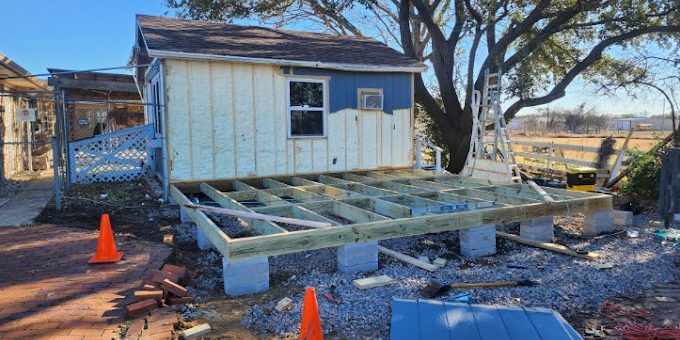Taking on a home painting project in Allen, Texas can be both rewarding and cost-effective when done correctly. Whether you’re refreshing a single room or tackling a complete makeover, understanding the process and planning thoroughly are key to achieving a flawless finish. Home painting is more than just applying color—it’s about creating an environment that feels inviting, reflects your personality, and enhances the value of your property. For many homeowners, it’s an exciting journey, but without the right insights, it can quickly become overwhelming. This guide will help you navigate the essentials of DIY painting with care and confidence.
Key Takeaway: Successful DIY home painting requires thoughtful preparation, the right tools, and an understanding of different surfaces and techniques to ensure long-lasting, professional-looking results.
Preparing Your Space for a Perfect Paint Job
The Importance of Surface Preparation
Before dipping the brush into paint, make sure the surfaces are properly cleaned and repaired. Dust, dirt, and grease can prevent paint from adhering correctly, causing peeling and uneven finishes. Wash walls with mild soap and water, and let them dry completely. If you notice cracks or holes, patch them with joint compound and sand the area for a smooth surface.
Why Priming is Non-Negotiable
Primer creates a uniform base, especially on new drywall or over dark colors. It improves adhesion and ensures that the topcoat delivers accurate color and durability. Investing time in this step prevents future peeling and allows your finish to look seamless.
Handling Textured Surfaces with Care
Homes in Allen often feature textured ceilings or walls. If your project involves popcorn texture removal, consider whether DIY is practical or if a professional should step in due to the mess and safety concerns. Once the texture is removed, skim-coating may be needed for a flawless finish.
Choosing the Right Paint and Tools
Understanding Paint Types and Finishes
The choice of paint matters more than you think. For high-traffic areas like hallways and kitchens, opt for semi-gloss or satin finishes, which are easier to clean. Bedrooms and living rooms can benefit from matte or eggshell for a soft, elegant look. For bathrooms, always go for a moisture-resistant option to prevent mold growth.
Selecting Quality Tools for Efficiency
A professional finish depends heavily on the tools you use. High-quality brushes and rollers deliver smoother results and minimize streaks. Avoid bargain options, as they often shed bristles or create uneven coats. Consider extension poles for ceilings to reduce fatigue and maintain consistency.
Mixing and Testing Colors Before Commitment
Lighting significantly affects how colors appear. Always test your chosen shades on a small section before committing. View them under natural and artificial light to avoid surprises. Remember, colors often look darker when dry, so account for that in your selection.
Techniques for Professional Results
Cutting In and Rolling Like a Pro
When painting walls, start by cutting in the edges with a brush before rolling. This technique ensures clean borders and prevents roller marks near trim or ceilings. Work in small sections to maintain a wet edge and avoid lap marks.
Dealing with Drips and Uneven Coverage
If you notice drips while painting, smooth them out immediately with a brush before they dry. Uneven coverage often happens when the roller is too dry—reload it frequently and maintain even pressure throughout the stroke.
Achieving Smooth Cabinet Finishes
Kitchen transformations are popular among Allen homeowners. If you plan on cabinet painting, remove doors and hardware before sanding and priming. Using a sprayer instead of a brush can provide a factory-like finish. If staining is your choice, check out options for kitchen cabinet staining to achieve a rich, timeless appearance.
Addressing Common DIY Challenges
Managing Drywall Imperfections
Cracks or dents in drywall can ruin the final look. Repairing them before painting is critical. For larger repairs, you may want to explore professional drywall services to ensure the integrity of your walls.
Wallpaper Dilemmas: Remove or Cover?
Deciding whether to remove or paint over wallpaper is a common challenge. Painting over wallpaper can seem convenient, but removal provides a better long-term solution. If you’re unsure, look into wallpaper installation best practices before committing to your approach.
Weather and Its Role in Exterior Painting
If you’re taking on outdoor projects, timing matters. Avoid painting in extreme heat or humidity to prevent peeling and bubbling. Early mornings and late afternoons are ideal for exterior surfaces in Texas.
Extending the Life of Your Painted Surfaces
Protecting High-Traffic Areas
Use durable finishes in areas exposed to constant use, such as hallways or entryways. Adding a clear coat for extra protection can also help maintain the look over time.
Cleaning and Maintenance Tips
Gentle cleaning with a damp cloth can keep painted walls looking fresh. Avoid harsh chemicals that can strip the finish or discolor the paint. For stubborn marks, mild soap solutions usually do the trick.
When to Repaint for Best Results
Even with proper care, most interior paint lasts about 5–7 years. Exterior surfaces typically need attention every 7–10 years, depending on weather exposure. Repainting on schedule keeps your home looking beautiful and prevents structural damage from moisture.
Answering Common Questions
How do I prevent streaks when painting walls? Always maintain a wet edge when rolling and avoid overworking the paint. Using high-quality rollers and applying consistent pressure helps create a smooth, streak-free finish.
Is it better to stain or paint my kitchen cabinets? Both options have advantages. Staining highlights the wood’s natural grain, giving a timeless look, while painting allows for a more modern and colorful design. Consider your kitchen’s overall style and desired maintenance level.
Can I remove popcorn ceilings myself? While it’s possible, it can be messy and hazardous, especially if the texture contains asbestos. Professional popcorn texture removal ensures safety and efficiency, saving you time and stress.
How Lighting Influences Your Color Choices
Natural and artificial lighting can drastically change how paint colors appear in your home. Test swatches in different lighting conditions before making a final decision. This extra step ensures your chosen color looks just as beautiful at night as it does during the day.
The Role of Surface Texture in Final Results
Textured walls or ceilings require more paint and may need special rollers or sprayers for even coverage. If your home has intricate textures, be patient and take the time to apply multiple thin coats for the best outcome.
Why Professional Help Can Make All the Difference
DIY painting can be fulfilling, but certain projects—like deck staining and sealing or exterior painting—often require professional-grade tools and expertise for lasting results. MJ Workforce Solutions is here to help with a full range of services to keep your home looking its best, whether you’re planning a complete interior makeover or a small upgrade.







